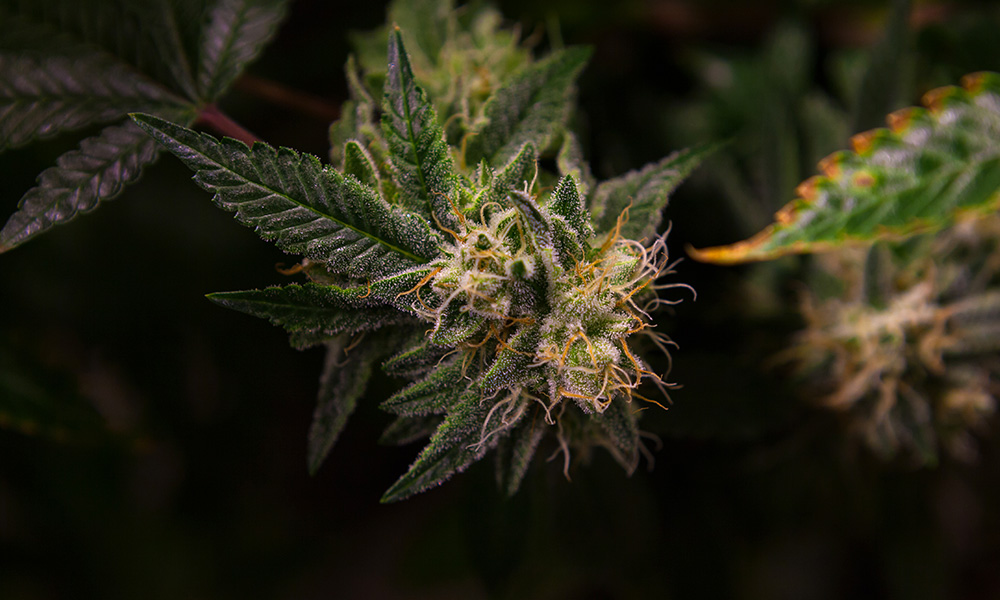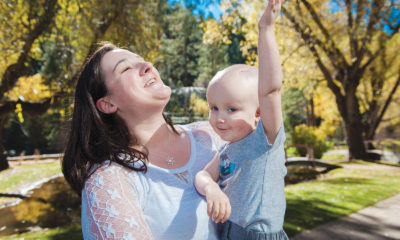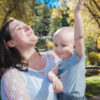
Medical
How One Canna-Mom Treats Her Daughter’s Rett Syndrome With Cannabis
One woman’s journey is emblematic of the larger disconnect between doctors and parents when it comes to pediatric cannabis treatments.
When Janelle Noble Donovan’s daughter Raegan was diagnosed with Rett syndrome, a rare neurological disorder, and began suffering from seizures caused by an unrelated mass on her brain, she knew right away that she wanted to try to treat her child with cannabis.
The San Diego resident’s determination was bolstered by the fact that Raegan’s physicians didn’t have much to offer besides pharmaceuticals, which Donovan says failed to offer her daughter relief.
“You wouldn’t believe what you’re expected to just deal with,” Donovan tells Cannabis Now.
Rett syndrome, the result of an X chromosome mutation on the MECP2 gene, is a non-degenerative disorder that affects girls much more often than boys.
“The typical presentation you see is an infant will develop normally, reaching milestones like sitting, crawling, making babbling sounds, reaching for toys,” Grace Bazin, a research nurse at Boston Children’s Hospital’s Rett Syndrome Program, tells Cannabis Now. “And then somewhere usually between six and 18 months of age, they have a regression.”
According to Bazin, Rett syndrome expresses itself differently in every individual, but is often characterized by impaired walking, regression of acquired verbal language and hand function, repetitive hand movements, seizures, gastro-intestinal issues, scoliosis and anxiety.

Following Raegan’s diagnosis, Donovan said sleep became a constant battle, and nights without any meaningful shut-eye left Raegan looking “possessed.” But the first night she dosed her child with around 150 milligrams of full-spectrum THC, Raegan managed to grab a then-miraculous four hours of sleep.
From there, Donovan moved to treating her daughter with cannabis in the daytime as well, and says high-THC formulations help Raegan feel and act most like herself. “I care about my daughter’s presence,” Donovan said. “Her personality is really independent, and she wants to do everything on our own. We use an eye gaze machine, and she’s really communicative on it.”
On her better days, Raegan is able to maintain control of her hands, walk, play and communicate via an eye gaze machine, signing and occasionally with words, a condition Donovan credits largely to full-spectrum
“You get those glimpses, when all the variables align like perfection, you know, the words come out,” Donovan said. “And the best feeling is right when she gets the word out. The other day, she said a perfect ‘Mama.’”
But neither Donovan’s journey with pediatric cannabis nor Raegan’s medical trajectory have been smooth sailing — often due to healthcare providers who are unaware of the benefits of medical marijuana and willing to chalk up any of Raegan’s health issues to her Rett syndrome.
Dismissive Doctors & The Lack of Federal Research on Cannabis
Following a year and a half of good health post-Rett diagnosis, during which Raegan was able to attend preschool, she started experiencing acid reflux and was put on a “major, major” course of antacids. Donovan said this left her daughter susceptible to bacterial infections, and it was during this period of time that Raegan contracted E. coli. She also said the standard of health and good mood Raegan had been able to attain while using cannabis was the driving force behind her certainty that doctors were wrong, and something major was happening with her daughter.
“[The E. coli infection] went undiagnosed for two months,” Donovan said. “Doctors missed it, hospitals missed it. They just kept reading procedures and telling us nothing was wrong, and she was just crazy because she had [Rett syndrome.] They just didn’t believe our baseline. They didn’t believe us because she was too good.”
Eventually, Raegan stopped breathing on a trip to the E.R., which led doctors to discover the infection. “That one infection was the catalyst that took us down two years of medical fragility, 10 or 12 infections, two intubations and thousands of seizures,” Donovan said.
“We would go into a hospital room and [say], ‘We treat our daughter’s Rett syndrome with cannabis,’ and they’re like, ‘There’s no treatment for Rett syndrome, have you read the 1979 article that states that?’ We’re like, ‘Yeah, it’s 2017. Stop trying to kill our kid.’”
Bazin, the research nurse who runs clinical trials for potential Rett syndrome treatments, says that doctors generally hesitate to deviate from the federal guidelines around cannabis, which can make them hesitant to recommend or even read up on the potential benefits of pediatric cannabis.
“For the most part, physicians tend to really follow the rules and regulations, because they have to,” she said. “I chalk it up to they’re scared of what they don’t know. I don’t know any neurologist who will prescribe it.”
Since Donovan found herself hitting a wall with many of the healthcare professionals she interacted with, she turned elsewhere to find information on how to use cannabis to alleviate some of her daughter’s symptoms. In her search for information, she eventually found herself enmeshed in Facebook communities run by fellow parents of children with neurodevelopmental disorders.
Online Groups Connect Canna-Families to Research — and Each Other
One of those communities Donovan turned to, Whole Plant Access for Autism or WPA4A, was founded by mothers Rhonda Moeller and Jenni Mai, who themselves met on Facebook. Moeller and Mai both started giving cannabis to their children on the autism spectrum in lieu of more conventional options.
Mai, who hails from the Midwest, turned to cannabis to treat her 23-year-old son’s “extreme behaviors,” including aggression and “self-injury,” which she felt were only exacerbated by pharmaceuticals. Her family relocated to California to begin the process of using cannabis as medicine.
Moeller’s daughter was in kindergarten when she began to display aggressive behavior that pushed Moeller to seek out a medical marijuana recommendation in an effort to avoid “the pharmaceutical route.”
Both women were blown away by the changes cannabis seemed to enact in their children’s behavior, and were inspired to build a local community on Facebook to share information about dosage, sourcing and other tips between SoCal parents of children with autism.
“We realized we were a good resource for families, and there wasn’t really another group out there that was doing what we were doing, so we opened it up to everybody,” Moeller told Cannabis Now.
“We do polls, surveys, collect our own data, see what everyone’s using, how it’s working, is it effective,” Moeller said. “Then we generate graphs and tables and we give those back to the families… information about what a lot of families in the group are doing, and we let them do with that what they want. A lot of this is trial and error, figuring it out for yourself and for your kid.”
Soon, the group was inundated with requests from parents from across the state of California, then across the country and finally around the world. “Everybody wants our help,” Mai said. “I think we have members in 78 different countries.” WPA4A now has more than 15,000 members total, most of them parents of children with autism, and WPA4A has expanded into a non-profit.
“As we got bigger and bigger, we realized we needed to do more for these families… we wanted to be able to fundraise and get donations and pass it along to people that needed it,” Mai said. “And the best way we could do that was through the non-profit route.”
Moeller and Mai also run webinars, present their findings at conferences and share data with interested physicians, researchers and patient’s groups.
And luckily, though it’s not the prevailing attitude, there is interest in cannabis’s medicinal qualities from those in the realm of research — like Bazin. She said the FDA approval of Epidiolex gives her hope for more research on the cannabis plant, and said that she’s already noticed a distinct uptick in general interest.
When she first began working with patients with neurodevelopmental disorders, she heard “a couple” of their parents mention CBD, but now that rate has skyrocketed. “In the last year and a half, I’ve heard it at like 80% of visits. The parent brings up either CBD specifically or medical marijuana, and they’re saying either they’ve tried it, they want to try it, they plan to try it, ‘How do I get it?’”
Donovan, for her part, is still using cannabis in conjunction with dietary adjustments and other lifestyle changes to help her daughter live her best possible life. She’s also founded her own line of natural topical treatments, ANSHI. While the products don’t include cannabis, she says it’s a path she may not have pursued without cannabis, which she said was the first natural treatment she tried.
And pending Raegan’s continual improvement, Donovan plans to have her enter first grade in the fall.
“I got a diagnosis when my kid was a year and a half [old],” Donovan says. “They told me she was never going to do all of these things and good luck with everything. I left that room thinking, well, if cannabis doesn’t work, I’m gonna take her to the Amazon, because the Amazon has tons of benefits that we don’t have in the West. I was never going to give up on my kid that easy. And I never will.”
TELL US, do you know anyone who uses cannabis to treat a pediatric health issue?























